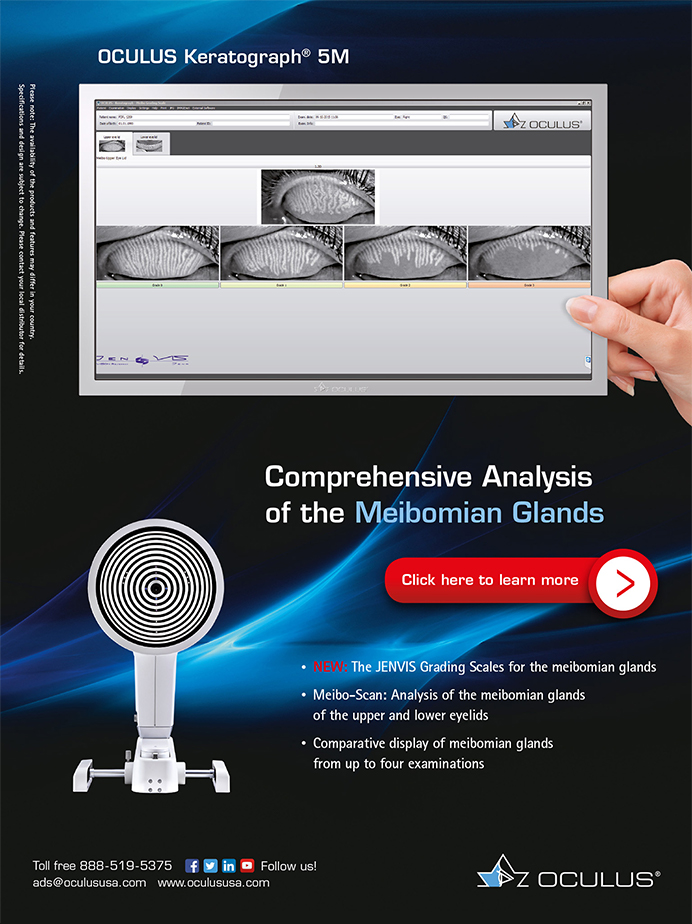As someone who has spent 25-plus years working alongside surgeons to comanage patients who have undergone cataract surgery, it has been satisfying to see an increasing number of surgical practices embrace the collaborative model of patient care.
The most successful practices across this country have embraced a team approach to patient care. Some prefer to have ODs and surgeons in the same office; others prefer that they practice their respective disciplines in separate spaces. Regardless of the model, the OD who encounters a patient with cataracts ought to consider this list of do’s and don’ts before referring the patient to a surgeon.
No. 1: DO DETERMINE IF THE LEVEL OF CATARACT MEETS MEDICARE OR PRIMARY INSURANCE GUIDELINES.
Guidelines may vary depending on the Medicare Administrative Contractor in your region or the patient’s insurance carrier. In general, patients must have a BCVA of 20/40 or worse or show a 2-line decrease in BCVA on brightness acuity testing. Most important, the patient must have specific visual complaints in order for insurance to cover the procedure.
No. 2: DON’T ASSUME THAT PATIENTS AREN’T WILLING TO PAY OUT OF POCKET.
If your patient was born between 1946 and 1964, say hello to your baby boomer! Boomers have been characterized as hardworking, goal-oriented, competitive nonconformists who desire independence and quality of life. This patient may be symptomatic with dysfunctional lens syndrome resulting in vision of 20/20-. You may be surprised to hear that spending $3,000 per eye for laser refractive cataract surgery with intraoperative aberrometry would be well worth it to such a patient. After all, his or her hearing aids cost $4,000 per ear and that recent cruise cost $5,000 (and lasted only a week). Remember, there is a difference between cost and perceived value.
No. 3: DO CHECK IF THE LEVEL OF CATARACT MATCHES YOUR PATIENT’S BCVA.
If your patient appears to have a 20/40 cataract but has 20/50 BCVA, rule out other pathologies before treating the cataract. Does the patient have amblyopia or perhaps a subtle epiretinal membrane? It is best to identify and treat other contributing factors to poor vision before addressing the cataract. Otherwise, you may have an unhappy patient in your chair after surgery.
No. 4: DON’T FORGET THE OCULAR SURFACE.
The top cause for refractive surprise after cataract surgery is incorrect corneal measurements related to ocular surface disease. If your patient has a clinically significant cataract but has a suboptimal ocular surface, take time to educate your patient on the importance of surface optimization, and execute an appropriate treatment protocol before referring for surgery.
No. 5: DO ASSESS YOUR PATIENT’S INTEREST LEVEL IN REDUCING DEPENDENCE ON GLASSES.
There are a number of questionnaires one can use, such as the Dell Questionnaire, that can help identify and characterize the patient’s desire for spectacle independence. Additionally, I always recommend that a friend or family member accompany the patient to the consultation visit. Some patients who may benefit from a toric IOL, for example, may not be the type of person who spends money on him or herself. A son, daughter, or trusted friend can be a key partner in helping the patient make an informed decision based on value and not cost.
No. 6: DON’T FEEL COMPELLED TO RECOMMEND A SPECIFIC PREMIUM OR ASPHERIC IOL.
We have come a long way in IOL technology over the years. The »Tecnis Symfony extended depth of focus IOL (Johnson & Johnson Vision) is the latest IOL to join the presbyopia-correcting market. It is important to remember, however, that there are subtleties to each IOL, and that there is not a one-size-fits-all implant. If you have a »Pentacam (Oculus) and »IOLMaster (Zeiss) in your office, then by all means be as specific as you want in providing diagnostic details to the surgeon. Otherwise, just make your surgical counterpart aware of the patient’s goals. This will help the surgeon design an appropriate surgical plan.
No. 7: DO TAKE THE TIME TO ASSESS THE PATIENT’S SUPPORT SYSTEM AS IT RELATES TO SURGERY.
Will the patient be able to self-administer the postoperative eye drops? If not, does he or she have a strong support system in place? If not, perhaps this patient would be best served by having “dropless” cataract surgery. Discuss concerns the patient may have with drop instillation. Addressing this ahead of time can make the difference between a good result and a devastating outcome.
No. 8: DON’T FORGET MIGS.
Glaucoma is a common comorbidity for patients with cataracts. Such patients may be eligible for a microinvasive glaucoma surgery (MIGS) device or procedure. Although this field of surgical eye care is still developing, we know that the potential exists for a MIGS procedure to lower IOP. Eliminating even a single topical glaucoma product from the patient’s daily regimen may improve that patient’s quality of life.
No. 9: DO CONSIDER EXTENUATING FACTORS.
Is there a history of trauma? Does the patient have Fuch’s dystrophy? Are there any antibiotic allergies that the surgeon should be aware of? Is the patient taking tamsulosin HCl (Flomax, Boegringer Ingelheim Pharmaceuticals)? Did the pupil(s) dilate poorly? Will the patient possibly need a capsular tension ring or Malyugin ring based on these findings? Any information you can provide the surgeon regarding possible risk factors for surgery are valuable.
No. 10: DON’T ASSUME THE SURGEON WILL ARRIVE AT THE SAME CONCLUSIONS YOU HAVE.
Communicate! No one knows your patient better than you. After completing a thorough examination of your patient’s eye health, having investigated his or her wants and needs, establishing that the patient has realistic expectations, and ensuring that the patient is mentally prepared for surgery, the next step is to share this information with your surgeon.
Sharing information about the patient’s expectations and needs is important in the collaborative model. Don’t assume that your surgical partner will come to the same conclusions you have and will communicate the same messages to your patient. When the OD and the surgeon are on the same page, we can ensure a seamless experience for our patients.






